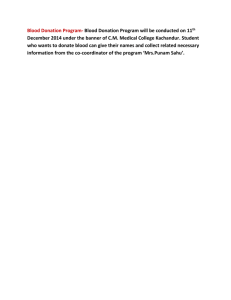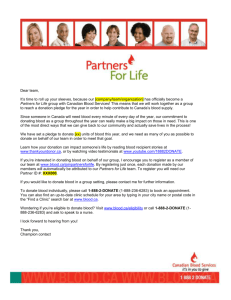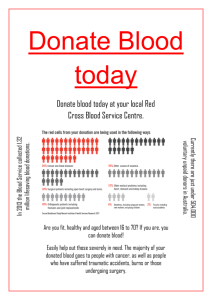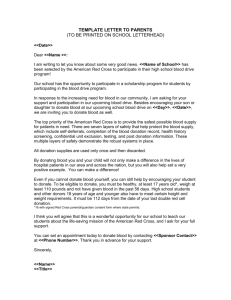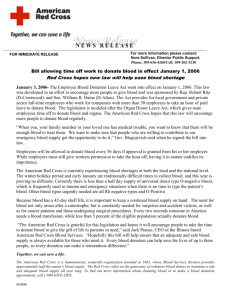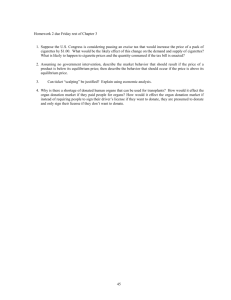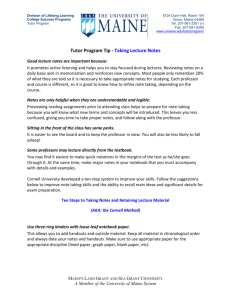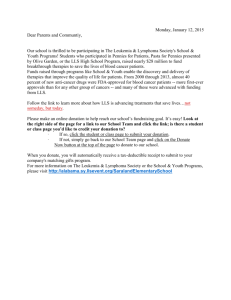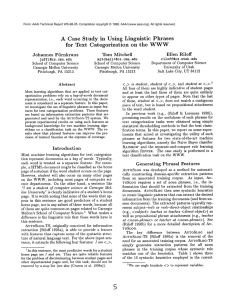Using Note Cards Effectively
advertisement
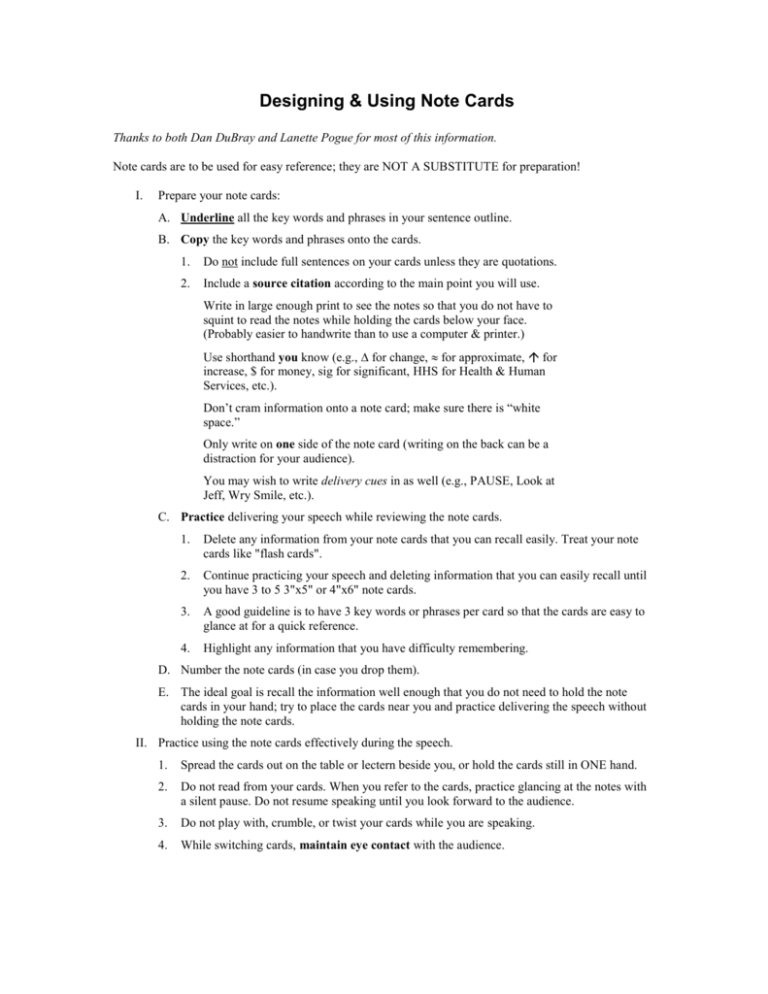
Designing & Using Note Cards Thanks to both Dan DuBray and Lanette Pogue for most of this information. Note cards are to be used for easy reference; they are NOT A SUBSTITUTE for preparation! I. Prepare your note cards: A. Underline all the key words and phrases in your sentence outline. B. Copy the key words and phrases onto the cards. 1. Do not include full sentences on your cards unless they are quotations. 2. Include a source citation according to the main point you will use. Write in large enough print to see the notes so that you do not have to squint to read the notes while holding the cards below your face. (Probably easier to handwrite than to use a computer & printer.) Use shorthand you know (e.g., for change, for approximate, for increase, $ for money, sig for significant, HHS for Health & Human Services, etc.). Don’t cram information onto a note card; make sure there is “white space.” Only write on one side of the note card (writing on the back can be a distraction for your audience). You may wish to write delivery cues in as well (e.g., PAUSE, Look at Jeff, Wry Smile, etc.). C. Practice delivering your speech while reviewing the note cards. 1. Delete any information from your note cards that you can recall easily. Treat your note cards like "flash cards". 2. Continue practicing your speech and deleting information that you can easily recall until you have 3 to 5 3"x5" or 4"x6" note cards. 3. A good guideline is to have 3 key words or phrases per card so that the cards are easy to glance at for a quick reference. 4. Highlight any information that you have difficulty remembering. D. Number the note cards (in case you drop them). E. The ideal goal is recall the information well enough that you do not need to hold the note cards in your hand; try to place the cards near you and practice delivering the speech without holding the note cards. II. Practice using the note cards effectively during the speech. 1. Spread the cards out on the table or lectern beside you, or hold the cards still in ONE hand. 2. Do not read from your cards. When you refer to the cards, practice glancing at the notes with a silent pause. Do not resume speaking until you look forward to the audience. 3. Do not play with, crumble, or twist your cards while you are speaking. 4. While switching cards, maintain eye contact with the audience. Designing & Using Note Cards continued A sample of note cards with key word notation: INTRO: - Imagine you’re in a car accident today. - You need an org. donation. 89 thou people waiting Minorities 50% of list (27% Af. Am., 15% Hisp, 5% Asian – IAOD Jul 05) - Why people don’t donate B. EX: Brother – kidney – lucky Time Mag 2004: 1 in 4 kidney donations successful - How we can help A. Many myths - Dr. won’t save my life - Preferential treatment - Too old/nothing to donate. (IAOD) Cornea: 6 hr window from donor to recipient. B. Lack of knowledge - Some unaware - Families don’t know A. 74 people (daily) receive organ transp. 17 die waiting (Donate Life webpage) Preview: I will discuss: - Need for org. donation BODY: II. Why a problem? BODY I. Background: BODY III. Solutions: A. Driver’s License dot B. Online method: donatelifecalifornia.org (SF Chronicle, Apr. 5, 05) C. Tell family – in advance Can work: US HHS Sec. Mike Lavitt (2005): 26 thou + American’s received org. transp last year—new national record. CONC: Emily’s story NOTE: If you don’t understand the above note cards, that’s just fine! It’s not your speech! If it were yours, you would understand the abbreviations, the references, etc. Your note cards should be: concise (written in key words only) and an easy reference (with spaces between each line).
